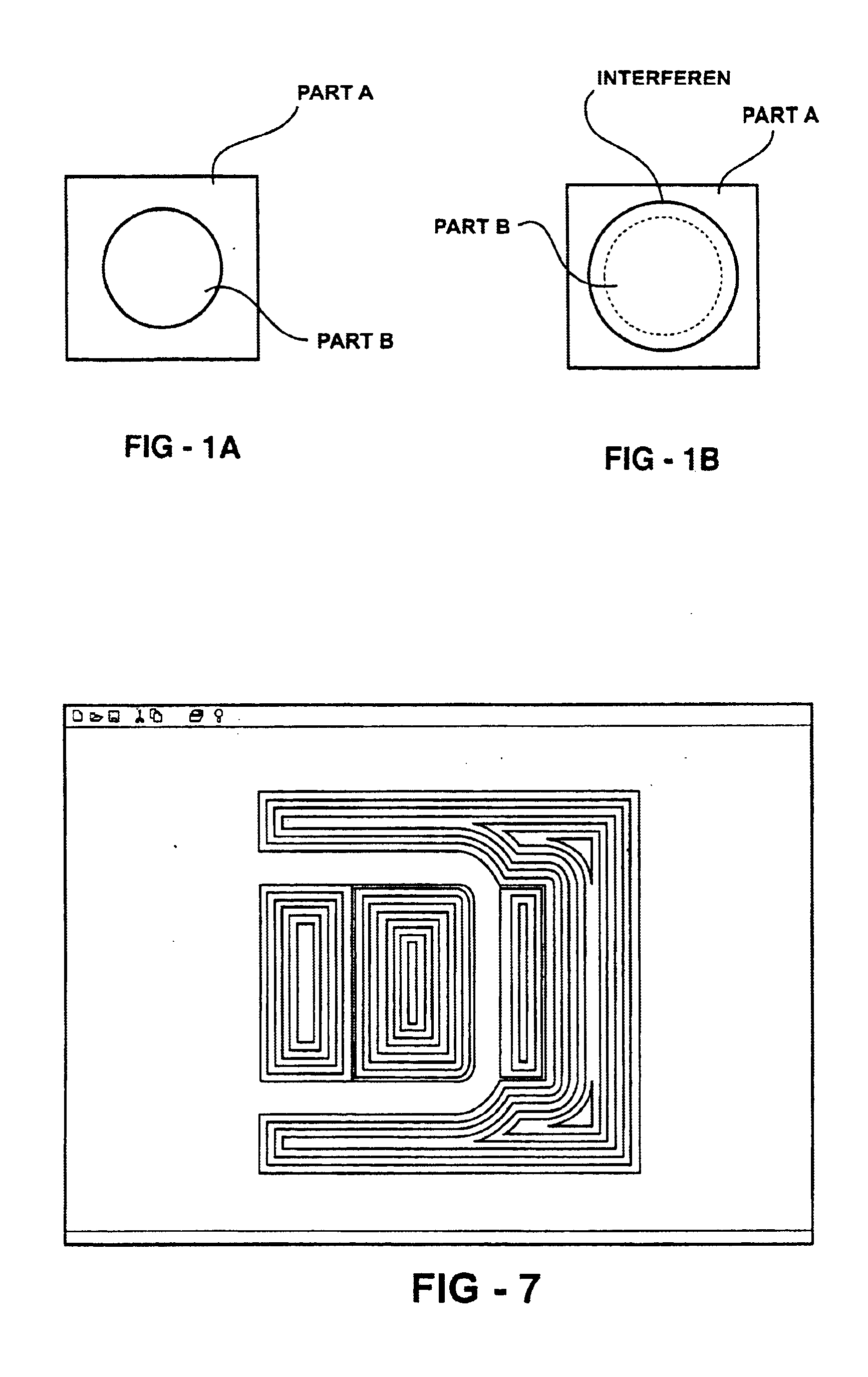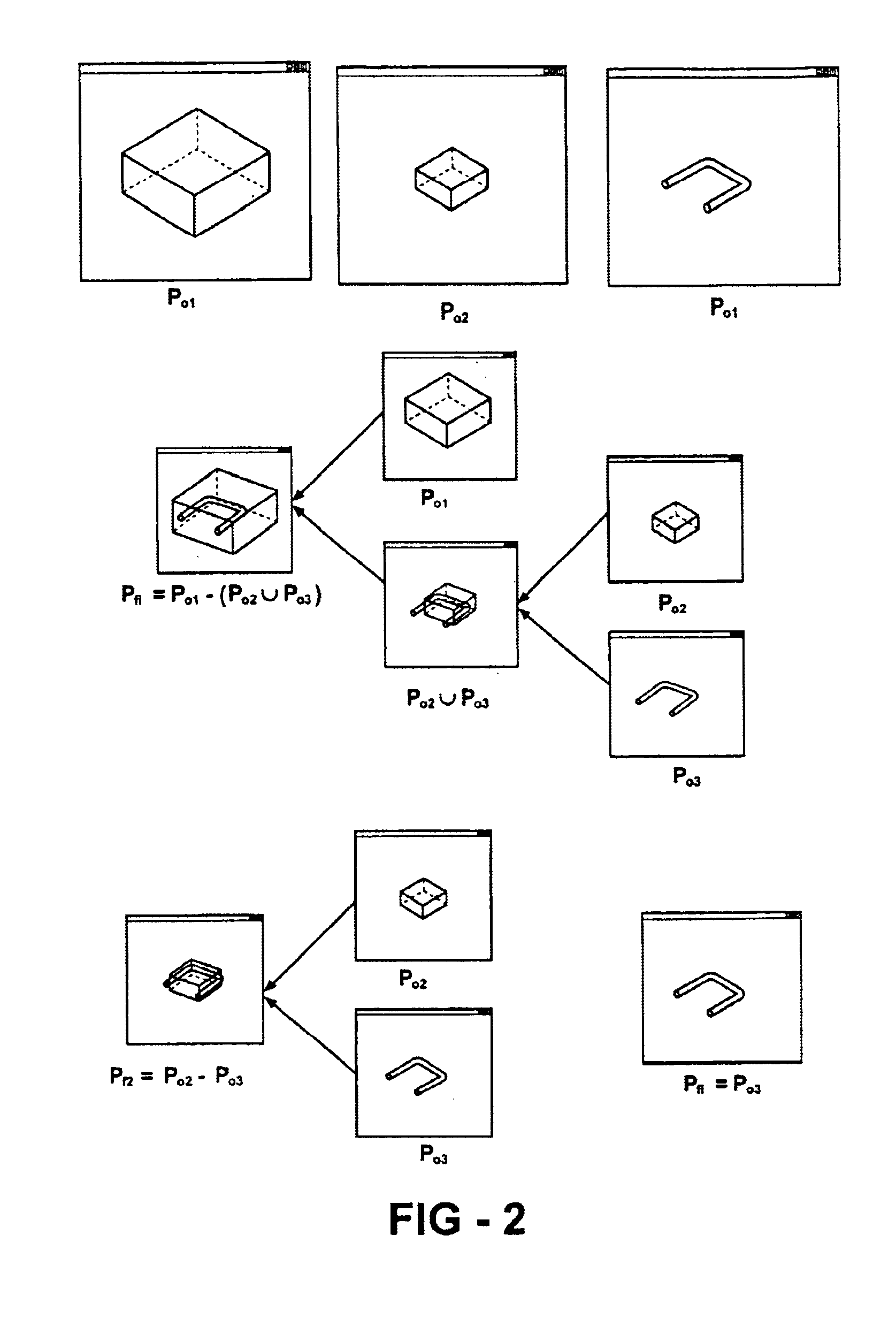Multi-material toolpath generation for direct metal deposition
a technology of direct metal deposition and toolpath generation, applied in the direction of total factory control, programme control, instruments, etc., can solve the problem that existing cad systems, however, generally only have the ability to accommodate single-material parts
- Summary
- Abstract
- Description
- Claims
- Application Information
AI Technical Summary
Benefits of technology
Problems solved by technology
Method used
Image
Examples
Embodiment Construction
In direct metal deposition, or DMD™, the dimensions and overall geometry of a fabricated article are rendered in accordance with a computer-aided design (CAD) description. For all but the simplest of parts, the geometry must be described mathematically. Modeling of the shapes involved is achieved through the use of CAD systems, and from these representations, tool paths are generated to drive a numerically controlled additive process to manufacture the part.
In order to drive the DMD's CNC system, a text file called the part program (or toolpath file) is generated from commercial CAM software containing commands that are understandable to the CNC. The commands are loaded into the memory and executed. Typical commands are move commands, which tell the CNC to move to a new point at a given speed, turn on / off the laser and powder flow. These commands are all embedded directly within the part program when it is created, and are triggered at specific points in the program. Some parameters...
PUM
 Login to View More
Login to View More Abstract
Description
Claims
Application Information
 Login to View More
Login to View More - R&D
- Intellectual Property
- Life Sciences
- Materials
- Tech Scout
- Unparalleled Data Quality
- Higher Quality Content
- 60% Fewer Hallucinations
Browse by: Latest US Patents, China's latest patents, Technical Efficacy Thesaurus, Application Domain, Technology Topic, Popular Technical Reports.
© 2025 PatSnap. All rights reserved.Legal|Privacy policy|Modern Slavery Act Transparency Statement|Sitemap|About US| Contact US: help@patsnap.com



